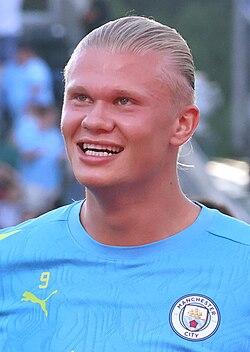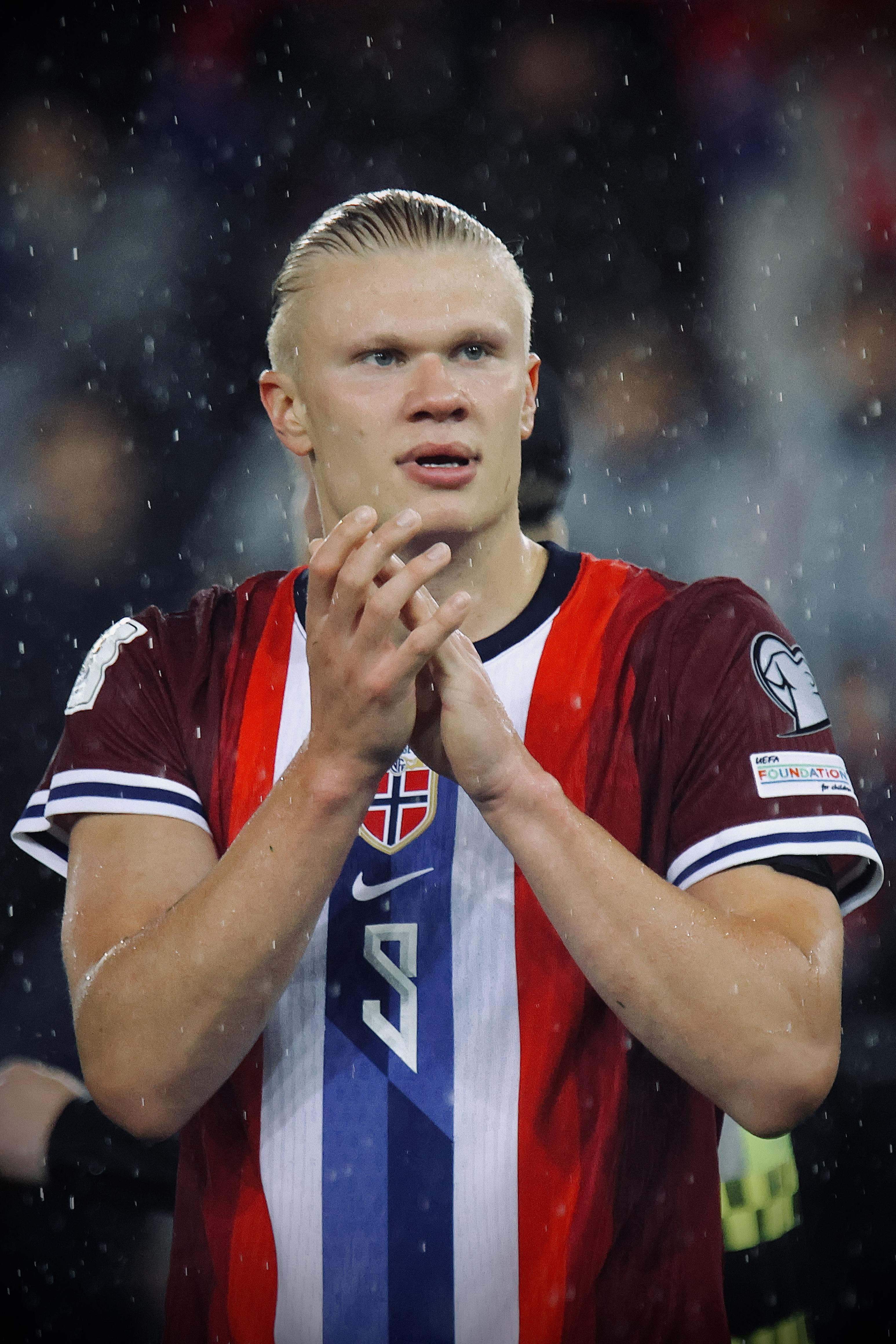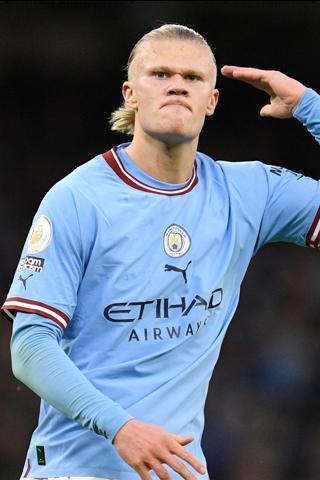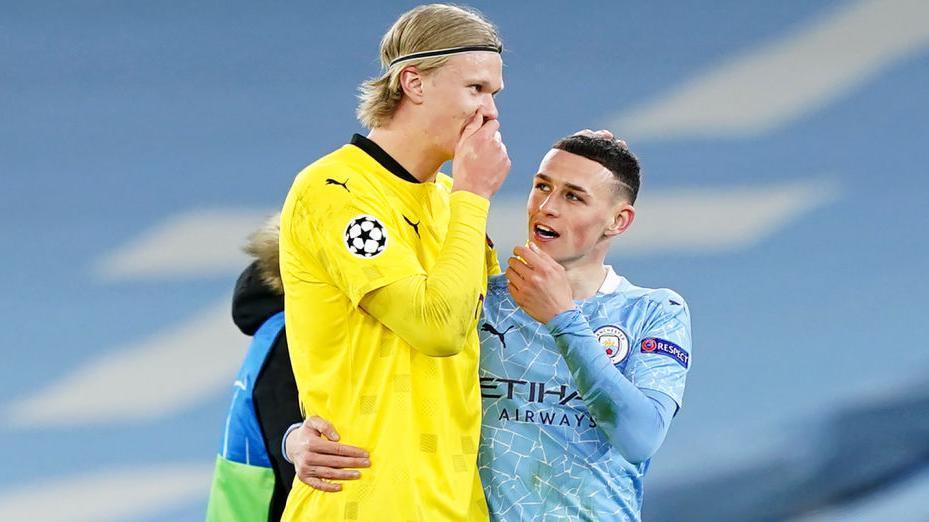Evolving Dynamics: How Haaland Could Fit into Real Madrid’s Ambitious Plans
As the footballing world buzzes with transfer speculation, the potential move of Erling Haaland to Real Madrid introduces an intriguing layer to the club’s forward strategy. With vinícius Júnior’s future under scrutiny amidst the club’s ambitious objectives, the Norwegian striker’s arrival could revolutionize the Spanish giants’ offensive lineup. Haaland, renowned for his explosive pace, clinical finishing, and aerial prowess, stands ready to spearhead a modernized attacking front that aligns with Real Madrid’s aspirations on both domestic and European stages.
Integrating Haaland into a team that thrives on creativity and fast-paced transitions would require a tactical reevaluation. His ability to draw defenders and exploit spaces would complement the likes of Rodrygo and Fede Valverde, thereby enhancing overall team synergy. Moreover, an influx of goals from Haaland could alleviate pressure on midfielders, allowing them to contribute more dynamically in attack. The strategic implications are manifold, giving Ancelotti a versatile asset while positioning Real Madrid as a formidable contender in the ongoing pursuit of their next Champions League title.

Analyzing the Impact: What Vinícius’ Departure Means for Real Madrid’s Tactical Approach
The potential loss of Vinícius Jr. from Real Madrid’s attacking lineup signals a pivotal shift in the club’s tactical framework. With his dynamic speed and dribbling ability, Vinícius has been instrumental in breaking defenses and creating goal-scoring opportunities. His departure could lead to a reassessment of key strategies,and the club would need to recalibrate its offensive approach to compensate for this gap. This might involve shifting to a more centralized attacking dynamic, pulling players like Rodrygo and Federico Valverde into more prominent roles, or perhaps adopting a two-striker formation that could accommodate a player like Erling Haaland, should he arrive as part of the rumored transfer.
In the event of Haaland’s recruitment, Madrid’s style may evolve to harness his physicality and finishing prowess. The club might explore these avenues:
- Increased direct play: With Haaland’s ability to operate as a traditional center forward, the team could favor longer passes and quick transitions to exploit spaces behind defenses.
- High-pressing strategy: Incorporating Haaland would allow for a more aggressive pressing game, enabling Madrid to regain possession quickly and launch counter-attacks.
- Versatility in the midfield: the integration of a target man like Haaland could create opportunities for midfielders to surge forward, thereby adding a new dimension to the attacking scheme.
With these adjustments in mind,the tactical reformation following Vinícius’ exit poses both challenges and opportunities for Real Madrid’s esteemed legacy in modern football.

Market Moves: Assessing the Financial Feasibility of a Haaland Transfer
The potential transfer of Erling Haaland from Manchester City to Real Madrid has stirred considerable excitement in the football world. Financially, the feasibility of such a move hinges on several critical factors. Real Madrid is known for its illustrious history and huge commercial revenues, but a deal of this magnitude would still require meticulous financial planning. Key elements influencing this assessment include:
- Transfer Fee: Reports suggest that Haaland could command a fee exceeding €150 million, which would undoubtedly strain even Madrid’s well-stocked coffers.
- wage structure: The Norwegian striker’s demands are likely to be steep, potentially surpassing the club’s current wage hierarchy.
- marketability: Haaland’s global appeal can translate into significant merchandising opportunities, potentially offsetting financial outlays in the long run.
Moreover, the shifting dynamics of player valuations in the transfer market cannot be overlooked. Clubs are now integrating advanced analytics to evaluate not just on-field performance but also the economic impact of a player’s presence. For Real Madrid, investing in Haaland could yield not only goals but improved marketing prospects. Factors to consider in this light include:
- Commercial Partnerships: real Madrid could leverage Haaland’s marketability to attract new sponsorship deals.
- Fan Engagement: A high-profile signing would likely engage the fanbase, boosting attendance and merchandise sales.
- Projected Revenue Growth: Strategic financial moves post-transfer could enhance overall club revenue, making the acquisition less risky.

Future Scenarios: Potential Lineup Adjustments Following a Major Switch at the Bernabéu
The potential departure of Vinícius Júnior from Real Madrid could signal a seismic shift in the club’s attacking dynamics.Should Erling Haaland arrive as his successor, the change would not only redefine the frontline but also impact the overall tactical framework. The integration of Haaland’s unparalleled goal-scoring ability might pave the way for a more direct style of play, emphasizing swift counter-attacks and vertical movement. With his towering presence, the attacking structure could see modifications aimed at maximizing aerial threats, which could conflict with the existing interplay style Real Madrid has enjoyed under Carlo Ancelotti. Fans might witness a rearrangement of roles,particularly with players like Rodrygo and Marco Asensio,who might need to adapt to a more goal-oriented approach alongside Haaland.
Moreover, the chemistry on the pitch would likely evolve, requiring adjustments in both midfield and wing positions. If Haaland were to slot into the central role,key creators like Luka Modrić and Toni Kroos would need to recalibrate their vision and passing to unleash his scoring potential. The formation itself could shift to accommodate this new attacking philosophy, possibly moving from a traditional 4-3-3 to something more fluid like a 4-2-3-1 or 4-2-2-2. This would allow for greater flexibility in attack while also solidifying the defensive shield. The real challenge lies in how quickly the team can adapt to these changes, especially during high-pressure matches, as synchronization between players will be vital for success. Haaland’s hypothetical transfer may not only be a straightforward player swap but could result in an entire reimagining of the squad’s strategic playbook.
